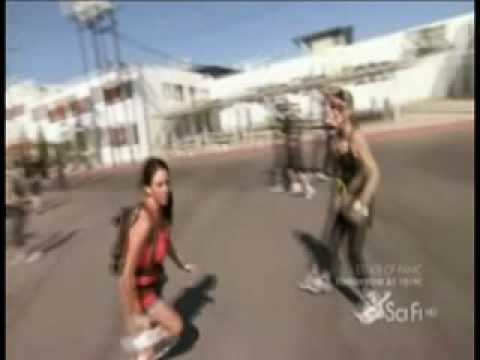8 /10 1 Votes
Starring Trey Farley No. of seasons 1 Running time 60 minutes Final episode date 16 December 2008 Number of episodes 6 | 8/10 IMDb Country of origin United States No. of episodes 6 First episode date 2004 Number of seasons 1 Networks Fuji Network System, Syfy | |||||||||||||||||||||||||||||||||
 | ||||||||||||||||||||||||||||||||||
Production company(s) ABC Media Productions
Fuji Television Cast Ryuji Kasahara, Noboru Takachi, Rika Adachi, Yoshihiko Hosoda, Satoshi Tomiura Similar Estate of Panic, Exit, Hot Set, Mad Mad House, Heroes of Cosplay | ||||||||||||||||||||||||||||||||||
Cha e episode 1 part 1
Cha$e (pronounced Chase) is a reality television show aired on Syfy in the United States around the same time as Estate of Panic. It is based on the successful Japanese show "Run for Money Tosochuu" (Run for money 逃走中) which began airing on Fuji Television in June 2004. It was a mid-season replacement for the show Battlestar Galactica.
Contents
Hunters
The hunters (who resemble stereotypical Men in Black) in the game are meant to capture the contestants, thus removing them from the game. They are:
Former WWE wrestler Ricky Ortiz was a guest hunter on 11/25/08. Ricky managed to get at least one capture.
Not all of the Hunters get to hunt; one Hunter is selected in some episodes to be a "Spotter", whose job is to drive around the game board in a special vehicle and locate the contestants for the other Hunters, relaying the contestants' position to the others, though they themselves are forbidden from making any captures. The Hunters are forced to ignore the camera crews, and are only allowed to break chase when they see a Runner. The Hunters do not communicate to any of the contestants.
General Format
10 contestants are released onto a playing field (called a "game board" in the context of the show). They are set a series of challenges, called "missions," for which they may earn "utilities" (see below). All the while, they must avoid being tagged by the show's resident hunters, more of whom are introduced onto the board as the game progresses; if tagged by the hunter, the contestant is "captured" and eliminated from the game, without winning any money.
Contestants earn money by finding "money flags" around the game board, each of which is worth bonus money. Each flag is worth $1,000, and there are 25 flags, thus a total of $25,000 available to be found. However, only the one who reaches the "exit point," or finish line, is able to keep the bonus money that he or she has found.
During the game, additional twists may be introduced by the host, such as making it easier for hunters to find contestants for a period of time for failing a mission, offering an opportunity to accept a guaranteed sum of money in exchange for leaving the game, or declaring a certain area of the game board off-limits.
The missions given to contestants at various parts of the game allow the participants to acquire defensive devices to negate the attacks of a hunter(s). Once the host initiates the mission, the contestants have a certain amount of time to locate the area the item is stationed/hidden, and solve the puzzle in order to unlock/obtain it.
The game lasts a total of 60 minutes. Towards the end of that time, the host will reveal the location of an exit point. The first contestant to reach the exit point wins $25,000 in addition to any money flags collected; the others win nothing, unless they accepted a buy-out. If nobody finds the exit point within the 60 minutes, nobody wins.
Utilities
The utilities for the show help the contestants avoid being captured by hunters. Each contestant may use each utility one time only. They include:
Episodes
See List of Cha$e episodes for more information.
